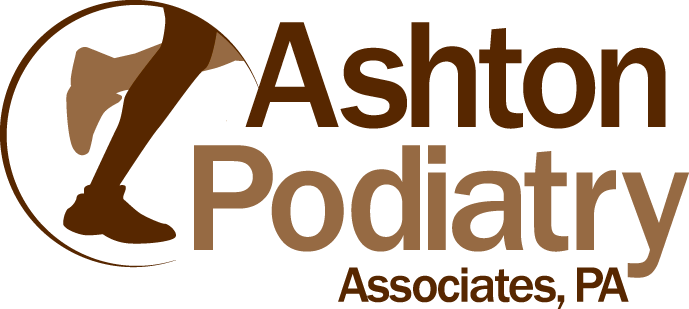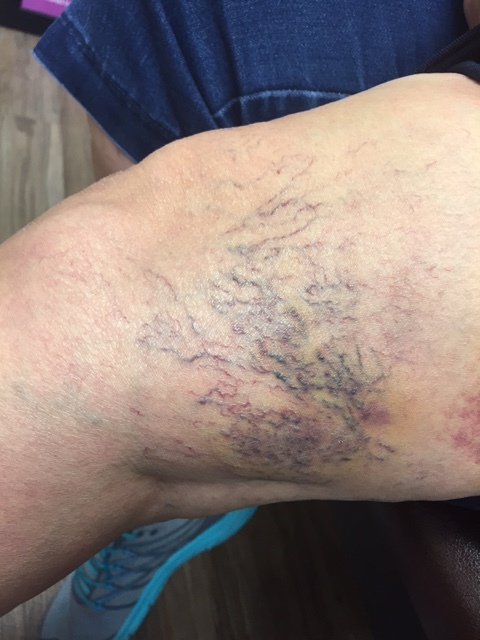5 Common Questions and Answers About Varicose Veins
/Common Questions and Answers About Varicose Veins
In addition to diagnosing and treating toenail fungus, heel and arch pain, bunions, hammer toes and the wide variety of foot and ankle ailments, podiatrists are accustomed to seeing patients with varicose veins.
What are varicose veins?
Varicose veins are abnormally enlarged, distended, superficial veins that appear on the legs as ropy, tortuous skin bulges. If they are close to the surface of the skin, or if the patient has pale skin, they are noticeably blue in color. The smaller, fine blue veins patients see on their legs are called Telangectasias, or “spider veins.” Both Spider Veins and Varicose veins can be a sign of an underlying problem with the veins in the legs, known as Chronic Venous Insufficiency.
What is Chronic Venous Insufficiency?
Chronic Venous Insufficiency, or “CVI” for short, occurs when the valves in the veins of the legs become broken and no longer form a tight seal. These valves are intended to keep blood from refluxing, or traveling the wrong way in the legs. Over months to years, this builds up the pressure inside the veins, leading them bulge out, the legs to swell, and in later stages the skin to thicken, become discolored or even bleed and develop sores. Patients often complain of aching, pain, heaviness and fatigue in the legs when standing or sitting for periods of time. Some patients experience restless legs and cramps in the legs at night. In order to properly diagnose CVI, your doctor may order a color doppler ultrasound to evaluate the function of the valves in the veins of the legs.
Venous ulcer:
How did I get varicose veins?
Varicose veins affect over 25 million adults in the United States, and there is a greater prevalence in women. Risk factors for developing varicose veins is prolonged standing, age, prior deep venous thrombosis (DVT), and multiple pregnancies. Perhaps the strongest link is genetic because if your parents had varicose veins, you may be more likely to develop them as well.
How can I prevent varicose veins from developing?
The best way to prevent varicose veins from developing is to stay on the move. When you walk, your calf and thigh muscles squeeze the blood up your veins so that it returns to your heart. Also elevating your legs when sitting can help with symptoms of venous insufficiency. Wearing compression stockings, usually 20-30 mmHg in compression strength is a great way to seek relief from chronic venous insufficiency and help prevent more varicose veins from developing.
What is the treatment for varicose veins?
Often times, the definitive treatment for varicose veins involves closing the greater and lesser saphenous veins using a minor surgical procedure known as endovenous ablation and sclerotherapy. This is performed in an outpatient setting by a vascular specialist such as an interventional radiologist. Your podiatrist is the best place to start when seeking help with varicose veins since they can be critical in the diagnosis and early treatment of chronic venous insufficiency.
When to seek help?
Dr. Roy, Dr. Scott and Dr. Ivan have been practicing podiatry for over 30 years and are accustomed to treating patients with venous disease of the feet and ankles. If you think you may be suffering from Chronic Venous Insufficiency (CVI), varicose veins, or spider veins, you should consider contacting Ashton Podiatry. Early diagnosis and treatment is important in preventing the later stages of advanced CVI such as skin discoloration and venous stasis ulcers.
This guest blog was written by Dr. Aaron Ashton, a board-certified vascular & interventional radiologist in the Dallas, Texas area. Dr. Aaron Ashton treats patients for chronic venous insufficiency, peripheral arterial disease, venous stasis ulcers, and diabetic ischemic wounds at Precision VIR.




